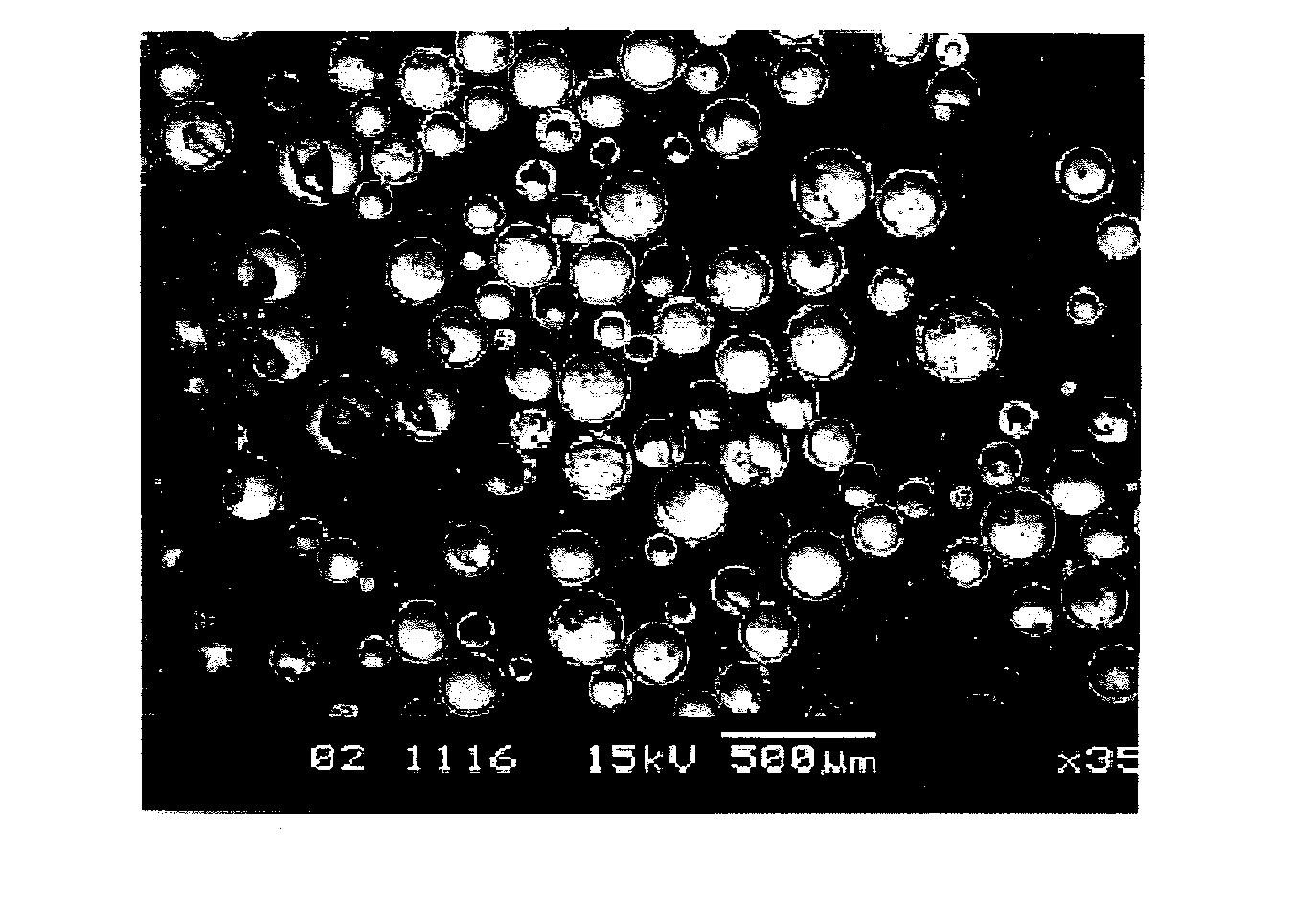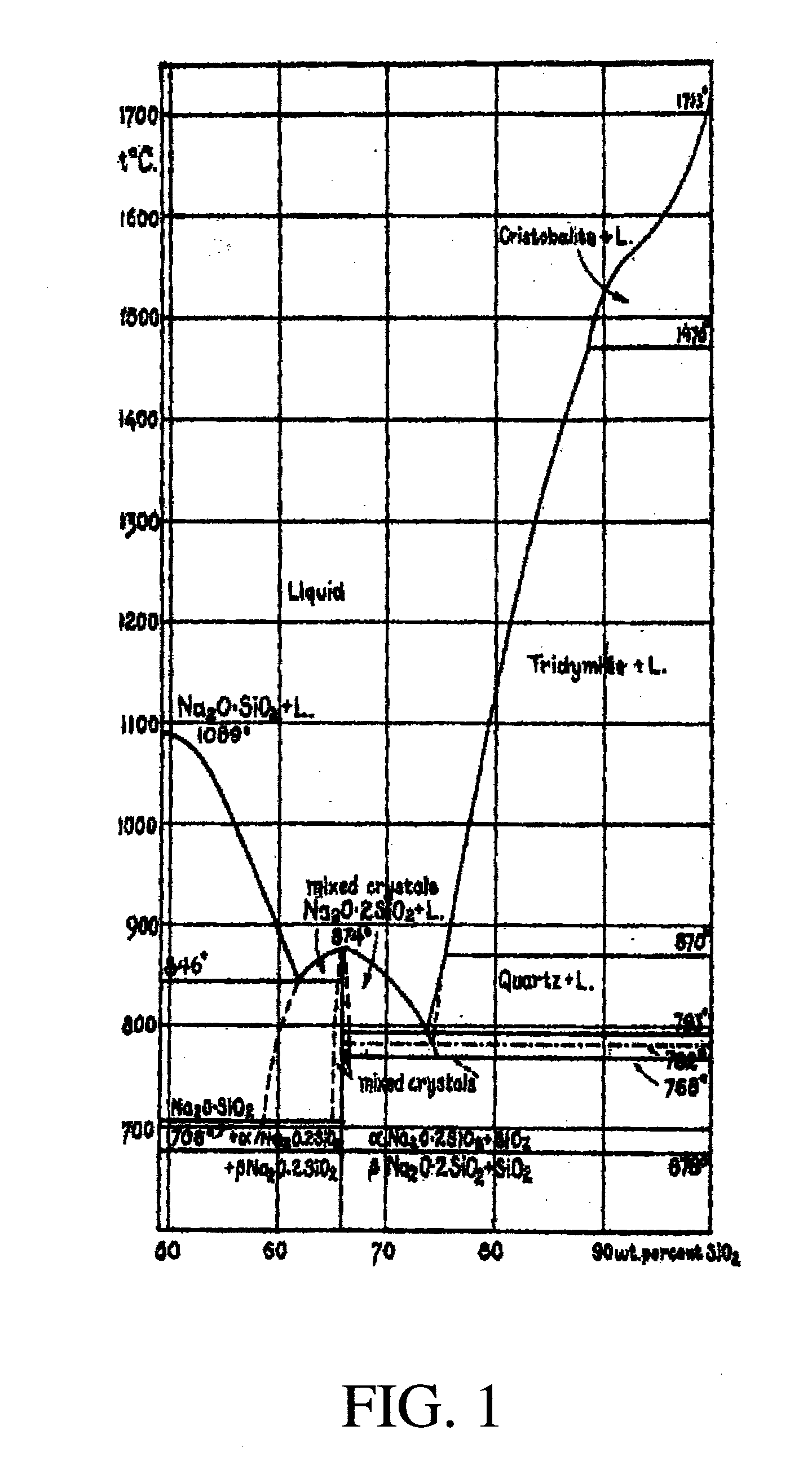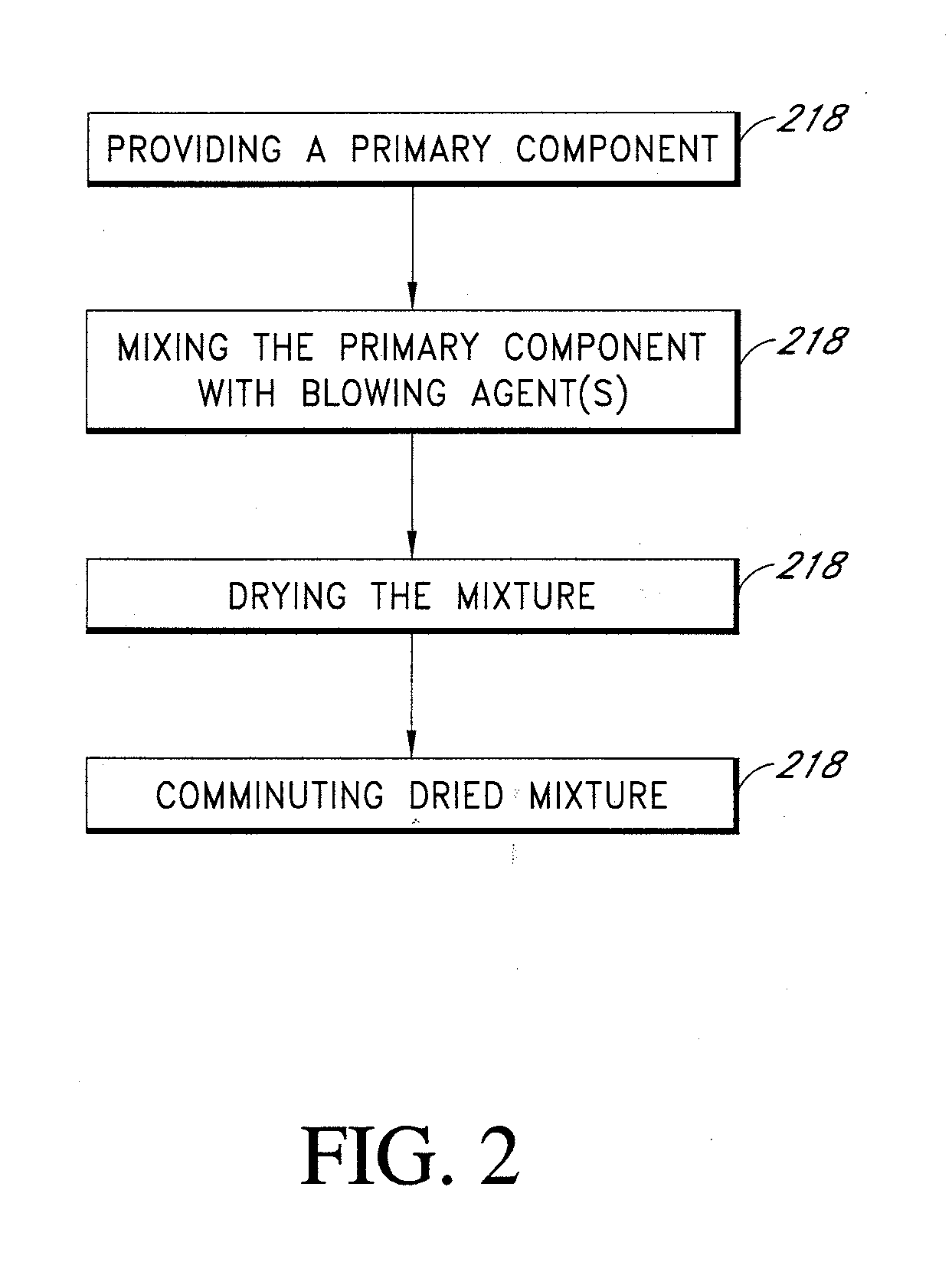Synthetic Microspheres and Methods of Making Same
- Summary
- Abstract
- Description
- Claims
- Application Information
AI Technical Summary
Benefits of technology
Problems solved by technology
Method used
Image
Examples
example 1
[0117]This example illustrates a method of making synthetic microspheres from formulations comprising fly ash, sodium silicate, and sugar.
[0118]Three samples were made by mixing a type F fly ash (ground to an average size of about 5.4 microns) with a commercial grade sodium silicate solution (SiO2 / Na2O is about 3.22, about 40% solid content), a commercial grade sugar, and water. The amounts of ingredients are given in Table 1. The composition of fly ash is given in Table 2. The mixtures were blended into homogeneous slurry, poured into a flat dish and allowed to solidify at room temperature for about 5 minutes.
[0119]The resulting products were further dried at about 50° C. for about 20 hours, after which they were ground and sieved to obtain powders within a size range of about 106 to 180 microns. In the next step, for each sample, the powders were fed into a vertical heated tube furnace at an approximate feed rate of about 0.14 grams / min. The gas flow inside the tube furnace was ab...
example 2
[0120]This example illustrates a method of making synthetic microspheres from formulations comprising fly ash, sodium silicate, and carbon black.
[0121]Three samples were made by mixing a type F fly ash (ground to an average size of about 5.4 microns) with a commercial grade sodium silicate solution (SiO2 / Na2O is about 3.22, about 40% solid content), a commercial grade carbon black, and water. The amounts of ingredients are given in Table 4. The composition of fly ash is given in Table 2. Each mixture was blended into homogeneous slurry, poured into a flat dish and allowed to solidify at room temperature for about 5 minutes. The resulting products were further dried at about 50° C. for about 20 hours, after which they were ground and sieved to obtain powders within a size range of 106 to 180 microns. In the next step, for each sample, the powders were fed into a vertical heated tube furnace at an approximate feed rate of about 0.14 grams / min. The gas flow inside the tube furnace was ...
example 3
[0122]This example illustrates a method of making synthetic microspheres from formulations comprising fly ash, sodium hydroxide, and carbon black.
[0123]Three samples were made by mixing a type F fly ash (ground to an average size of about 5.4 microns) with a commercial grade solid sodium hydroxide (flakes), a commercial grade carbon black, and water. The amounts of ingredients are given in Table 6. The composition of fly ash is given in Table 2. Each mixture was blended into homogeneous slurry, poured into a flat dish and allowed to solidify at room temperature for about 5 minutes. The resulting products were further dried at about 50° C. for about 20 hours, after which it was ground and sieved to obtain powders within a size range of about 106 to 180 microns. In the next step, the powders were fed into a vertical heated tube furnace at an approximate feed rate of about 0.14 grams / min. The gas flow inside the tube furnace was about 1 litre of air plus 3 litres of nitrogen per minute...
PUM
| Property | Measurement | Unit |
|---|---|---|
| Particle diameter | aaaaa | aaaaa |
| Size | aaaaa | aaaaa |
| Size | aaaaa | aaaaa |
Abstract
Description
Claims
Application Information
 Login to View More
Login to View More - R&D
- Intellectual Property
- Life Sciences
- Materials
- Tech Scout
- Unparalleled Data Quality
- Higher Quality Content
- 60% Fewer Hallucinations
Browse by: Latest US Patents, China's latest patents, Technical Efficacy Thesaurus, Application Domain, Technology Topic, Popular Technical Reports.
© 2025 PatSnap. All rights reserved.Legal|Privacy policy|Modern Slavery Act Transparency Statement|Sitemap|About US| Contact US: help@patsnap.com



